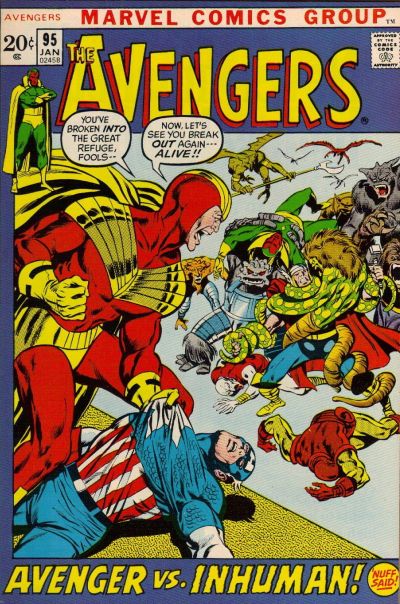
Avengers #99 (May, 1972)
Like its immediate predecessor, the second installment of writer Roy Thomas and artist Barry Windsor-Smith’s three-part follow-up to the Kree-Skrull War leads off with a cover inked by Windsor-Smith, but pencilled by John Buscema. If you happen to have read our post about part one, aka Avengers #98, then you may recall that your humble blogger was obliged to confess therein that he’d gone close to five decades not realizing that Buscema had anything to do with that book’s cover, never having recognized any hand at work on it save for that of Windsor-Smith. Something similar holds true for the cover of our present subject, Avengers #99 — only this time, it’s Buscema whose style I’ve always recognized, and Windsor-Smith whose contribution failed to register with your humble blogger until quite recently, when I checked the Grand Comics Database as part of my research for this post. (This fact probably has no significance beyond highlighting what a poor eye I have for picking out artists’ styles, but it’s still kind of amusing, at least to me.)
Behind the cover, on the other hand, Windsor-Smith’s work was unmistakable — and would have been even had the opening splash page carried no credits at all… Read More










